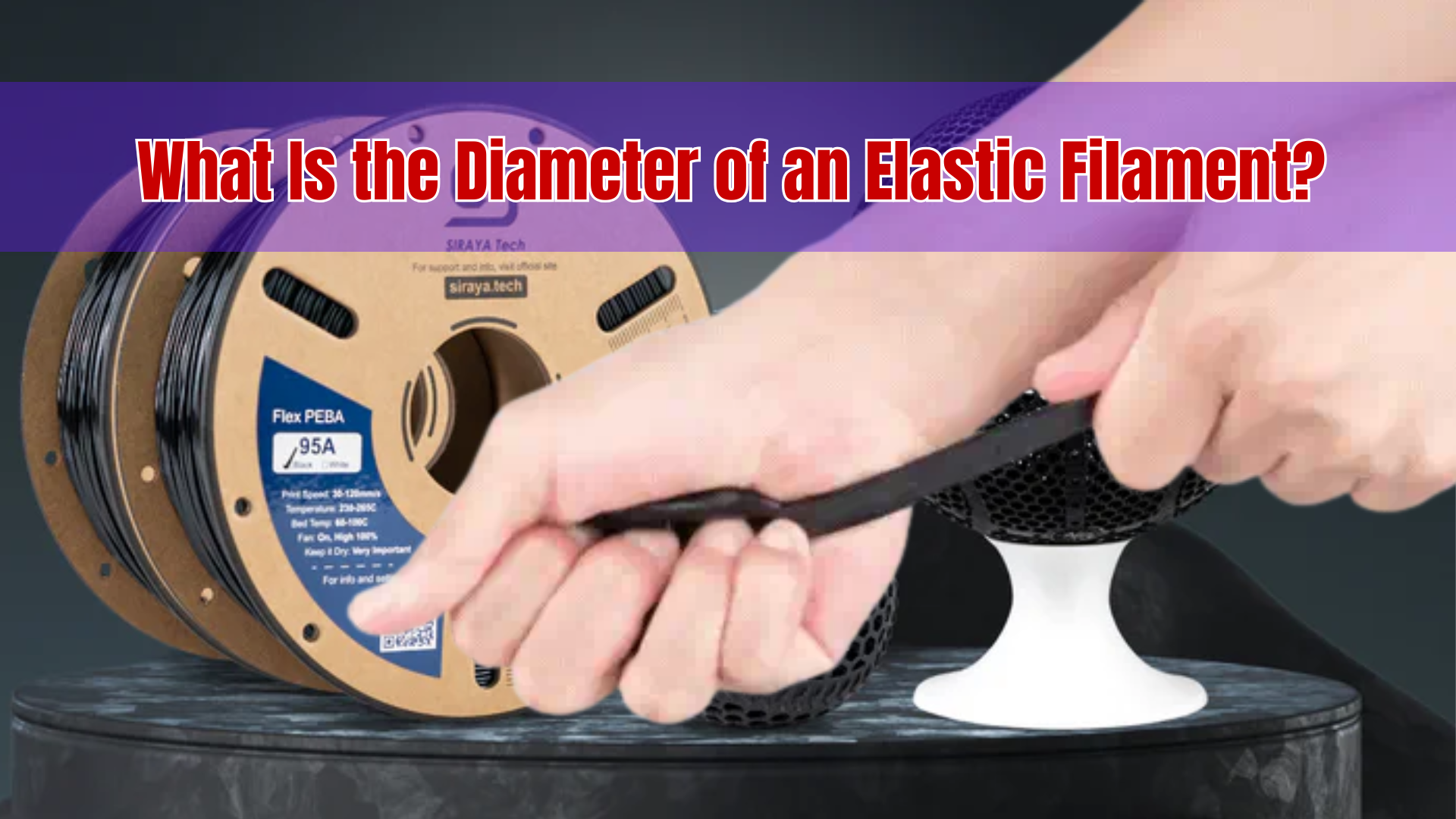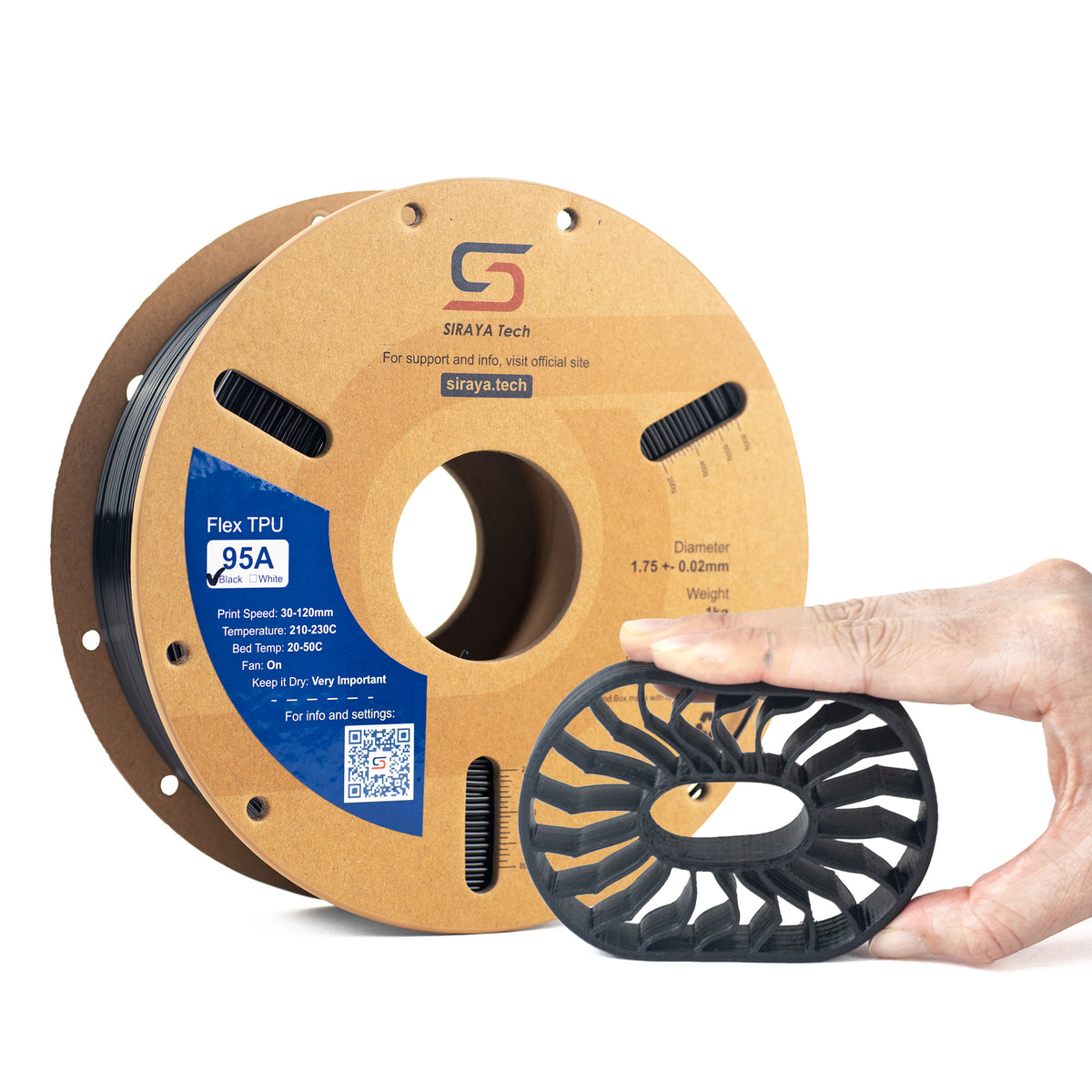Have you ever wondered what is the diameter of an elastic filament and why it matters in 3D printing or crafting?
Whether you’re a beginner exploring flexible materials or someone fine-tuning your prints, understanding filament diameter can make a big difference in your results.
The diameter affects how your printer handles the material, how strong or flexible your prints are, and even how smooth the final product looks. This guide breaks it all down in simple terms so you can make the best choices for your projects.
Keep reading to discover everything you need to know about elastic filament diameters and how to use them effectively.
What Is an Elastic Filament?
Elastic filaments are flexible, stretchy materials that can bend and return to their original shape. They’re used in many areas, from 3D printing and textiles to science and engineering.
The word “elastic” means the filament can stretch without breaking, which makes it perfect for flexible parts and soft designs.
Elastic filaments are often made from materials like:
-
✅ TPU (Thermoplastic Polyurethane) – durable and flexible
-
✅ TPE (Thermoplastic Elastomer) – soft and rubber-like
These materials are known for their smooth texture, durability, and ability to handle repeated stretching. In simple terms, an elastic filament is like a rubber band that can be printed into any shape you want.
You May Shop
What Is the Diameter of an Elastic Filament?
The diameter of an elastic filament refers to how thick the filament strand is. It’s usually measured in millimeters (mm).
Typical filament diameters include:
- ✅ 1.75 mm – the most common and easiest to use
- ✅ 2.85 mm (often called 3 mm) – thicker and used for industrial or heavy-duty printing
A filament’s diameter affects how it moves through your printer and how your printed object turns out.
A smaller diameter, like 1.75 mm, is easier to feed and control, while a thicker one, like 2.85 mm, can be more stable but harder to handle for flexible materials.
How Diameter Affects Elasticity and Strength
Your filament’s diameter can change how flexible or strong your print becomes.
Here’s how it works:
- ✅ Thinner filaments are easier to control and can bend more easily during printing.
- ✅ Thicker filaments are more stable and stronger but slightly less flexible.
Remember, the material type (like TPU or TPE) has the biggest impact on elasticity, not just the diameter.
📌 Want to learn how to choose materials that handle moisture and stress well? Check out Choosing the Right 3D Printing Material for Wet Environments to discover which materials perform best in challenging conditions.
Common Types of Elastic Filaments and Their Diameters

There are several types of elastic filaments, and each one has its own properties and common diameters. Let’s look at the most popular options.
TPU (Thermoplastic Polyurethane)
- ✅ Most widely used elastic filament in 3D printing
- ✅ Durable, flexible, and easy to print
- ✅ Available in 1.75 mm and 2.85 mm diameters
- ✅ Great for printing flexible parts that need to stretch and bend without breaking
TPE (Thermoplastic Elastomer)
- ✅ Softer and more rubber-like than TPU
- ✅ Ideal for grips, seals, and soft-touch parts
- ✅ Common diameters: 1.75 mm and 2.85 mm
PLA and PETG: Are They Elastic?
While PLA and PETG are not truly elastic, they do have some flexibility. PLA is more rigid, while PETG offers a bit more give.
📌 If you’re curious about how PETG compares to other materials, don’t forget to read What Is PETG Filament to understand its unique balance of strength and flexibility.
How to Measure Filament Diameter Accurately
Knowing your filament’s exact diameter helps you avoid printing problems. Even small differences can affect your print quality.
To measure correctly:
- ✅ Use a digital caliper or micrometer for precision
- ✅ Measure your filament at multiple points along its length
- ✅ Take the average measurement to set accurate printer settings
If your filament is too thick or too thin, your printer might over or under-extrude the material, causing rough or weak prints.
Matching Filament Diameter to Nozzle Size
Your nozzle size should match your filament’s diameter for the best results.
Here’s a quick guide:
- ✅ 0.4 mm nozzle – works well for 1.75 mm filaments (most common)
- ✅ 0.5 mm or larger nozzle – better for flexible filaments to prevent clogs
Choosing the right nozzle and filament combination helps your printer feed the material smoothly and reduces jamming.
📌 If you’re exploring how other materials behave under heat and pressure, browse What Is ABS Filament to learn how ABS compares to flexible materials in terms of durability and performance.
Are All Spools the Same Size?
Not all filament spools are the same size. Different brands and materials come on spools with varying diameters and widths.
Keep these tips in mind:
- ✅ Check your printer’s spool holder size before buying new filament
- ✅ Use spool adapters if your spool doesn’t fit properly
-
✅ Avoid tight or tangled spools, which can interrupt printing
If your spool doesn’t fit, it can cause feeding issues or tangles. Some users even print their own spool adapters to make sure everything runs smoothly.
Can You 3D Print Elastic Material?
Yes, you can 3D print elastic materials. However, flexible filaments like TPU or TPE require specific printer settings.
Here’s what helps:
- ✅ Slower print speeds (around 20–30 mm/s)
- ✅ Reduced retraction to prevent jams
- ✅ Direct drive extruder for better control
Printing with elastic materials can be tricky at first, but once you get the hang of it, the results are worth it.
📌 To understand how different materials compare in outdoor and high-stress conditions, check out ASA Filament Properties for a deeper look at ASA’s durability and weather resistance.
What Is the Best Diameter for Elastic Filaments?

The best diameter depends on your printer and the type of project you’re working on.
- ✅ 1.75 mm – best for most users, easier to handle, and more consistent
- ✅ 2.85 mm – good for larger prints or industrial use if your printer supports it
For most home printers, 1.75 mm is ideal because it provides smoother feeding and better control over flexible materials.
📌 Curious how ASA compares to PLA in flexibility and strength? Don’t forget to read ASA vs PLA to explore which material might be better for your next project.
Tips for Printing with Elastic Filaments
Printing with elastic filaments can be fun once you know the tricks.
Here are some quick tips:
- ✅ Print slowly to prevent filament stretching
- ✅ Avoid high retraction settings
- ✅ Use a heated bed for better adhesion
- ✅ Store filaments in a dry place to prevent moisture absorption
If your printer allows it, use a direct drive extruder because it gives you more control over flexible filaments.
Troubleshooting Common Elastic Filament Problems
If your prints look uneven or stringy, your filament diameter might not match your printer settings.
Try these fixes:
- ✅ Check filament diameter and adjust extrusion settings
- ✅ Use a larger nozzle if clogs occur
- ✅ Reduce print speed for smoother results
- ✅ Keep filament dry to prevent bubbling and poor layer adhesion
Elastic filaments can absorb moisture, which affects print quality, so always store them properly.
Conclusion
Understanding what is the diameter of an elastic filament helps you choose the right material for your 3D printing projects. Whether you’re printing flexible gadgets or durable wearables, the right diameter makes all the difference.
For more helpful guides and tips about elastic filaments and 3D printing, visit Siraya. They offer high-quality products like 3D printing filaments, resins for 3D printing, and platinum silicone crafting materials to help you create superior projects with confidence.
FAQs About Elastic Filament Diameter
What is a stretchy filament called?
Stretchy filaments are usually called flexible or elastic filaments. Common types include TPU and TPE. These materials can stretch and return to their original shape without breaking.
Is PLA or PETG more elastic?
PETG is more elastic than PLA. It can bend slightly without breaking, while PLA is more rigid. However, TPU or TPE are much more flexible than either of them.
What is the best flexible filament for 3D printing?
The best flexible filament depends on your project. TPU is the most popular because it’s strong, flexible, and easy to print with. TPE is softer and more rubber-like, great for parts that need extra stretch.
What is the most common filament diameter?
The most common filament diameter used in 3D printing is 1.75 mm. It’s widely supported by most desktop 3D printers because it feeds smoothly and offers consistent extrusion. The 2.85 mm (often called 3 mm) diameter is also used but is more common in industrial or professional-grade printers.



